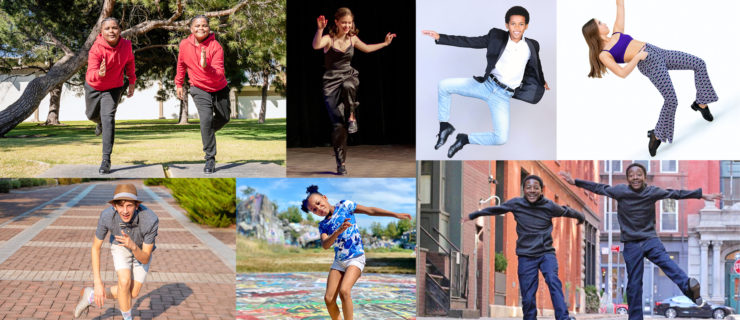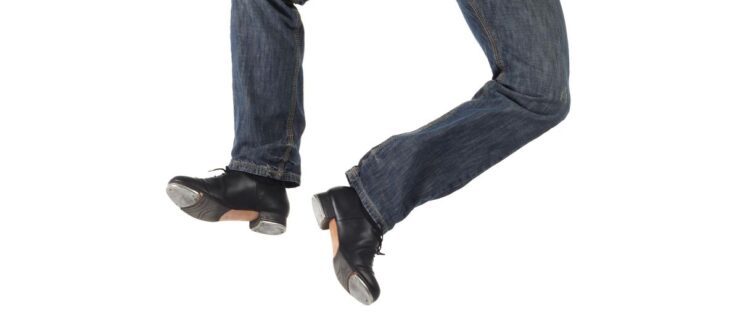Improving Your Improv
In your favorite weekly hoofing class, your taps have been spot on and your sounds have been clearer than usual—hooray! But when you hear the dreaded word “improv” come out of your teacher’s mouth and all of your classmates proceed to form a circle, your tap happy starts to recede. The star of your class jumps to the center. He begins to move with some thirds, a back essence, slides to the sound of a trumpet and then pumps up the intensity with all sorts of toes and heels. You wish you could do the same, but when it’s your turn, you suddenly freeze. His nerve taps leave you nervous.
You’re not alone. Even tap master Lynn Schwab, a teacher at STEPS on Broadway and a dancer with Barbara Duffy and Company and Max Pollak’s RumbaTap, has a love-hate relationship with tap improv. And Barbara Duffy, founding member of American Tap Dance Orchestra, artistic director of Barbara Duffy and Company and master teacher in NYC, used to dread being put on the spot. But improvisation is key to having all the necessary skills you’ll need if you want to launch a tap career. It might be daunting to rely on what you feel or hear in the music for moves, but engaging with sound on a deep level allows you to tap into your unique voice. Plus, improvising can help you get out of your usual patterns, enabling you to listen and let go—and find freedom in your dancing. What’s not to love about that? DS takes you inside tap improvisation to face your un-choreographed fear.
Stepping Time

Ever hear of the swing-turned-bebop hoofer Bunny Briggs jamming with jazz musician greats like Dizzy Gillespie and Charlie Parker? Their astounding improv skills had Briggs performing for some of the richest people in history at age 8 and touring with the biggest bands by age 20. Or what about those famous moments shared by tap legend Jimmy Slyde and Count Basie? Whether at the speakeasy called Cotton Club in the 1930s, La Cave in the early 90s or at Chelsea Studios in NYC today, dancers and musicians have always been in dialogue. When working with musicians, tappers offer additional percussion and can compliment the rhythms of jazz, creating a natural synergy.
As the greats knew, learning to improvise often simply means learning to engage with musicians. “When you’re learning to improvise, you sing a rhythm you want to play with your feet,” Duffy explains. “Listening to the music can inspire these rhythms.”
So let your feet do the thinking: Sing a rhythm and then try replicating that rhythm with your feet. Then sing that same rhythm again, but this time, use different footwork to create the same rhythm. As you continue to repeat the exercise, you’ll discover the multitude of sounds and patterns that can exist within a single rhythm.
Kick Your Tap Ego
Sometimes the biggest hurdle to overcome is how established you feel as a tapper in other ways. Twenty-five-year-old Shelby Kaufman, a dancer in Germaine Salsberg’s improv-inspired company, Les Femmes, says, “I’ve been tapping for 19 years and improvising for almost a year, so I have an expectation of myself. It’s been a struggle for me to get to the caliber I want to be at in improvisation. I try so hard to be impressive.”
But instead of beating herself up, Kaufman realized that improv has a technique just like any other dance form, and that learning this new style takes time for everyone. Plus, most dance training has lots of structure built into it: Just letting yourself go can seem alienating and frightening. Schwab explains, “When you have a certain level of dance and you can’t do as an improviser what you know you are capable of as a choreographer and as a dancer, it’s really mortifying. You have to go back to the beginning and trust that you will get there—and that’s hard for a dancer.”
Take Baby Steps
So how do we escape these self-sabotaging feelings? Get in the studio and take a class—just as you would for any new style! This is where you will learn the basic improv steps, which will become your vocabulary. “You might be an advanced dancer, but a baby improviser,” Schwab says. “It’s like listening to jazz music for the first time. There are always smaller structures. Once you understand a composition’s structure, you can understand how the musicians are improvising. So first find a groove. Then find a step that fits that groove. Then start doing theme and variation off of that. Take away everything again and you have baby, baby steps.”
To tackle these concepts, Duffy started a tap improv class at STEPS on Broadway in NYC to break down improv basics in a non-threatening environment. “I give people assignments,” she says. “They help students forget they are afraid and also give them tools to use and experiment with to improve their improv. I am constantly telling my students to relax—play! It’s not brain surgery!”
She adds that the more fun you have, the less daunting improv becomes, so make it a game. (Kaufman notes that some Les Femmes material even originated this way.) To start, create a theme: Pick a step, like cramp rolls, to focus on as the base of your improv. Experiment with using all the different kinds of cramp rolls you know. Then isolate: Limit yourself to only using certain footwork, for example, only toes & heels (no shuffles, flaps, brushes, etc.). Duffy also suggests testing what it feels like to only work with different dynamics: What happens if every step has big leg flings in it? What about if each step is an extremely tiny movement? See how creative you can get when given certain parameters.
A Process
All of Duffy’s exercises aim to take you out of your comfort zone. Such challenges will not only make you a more articulate tapper, but will also expand your repertoire, making it easier to improvise when put on the spot.
Duffy adds that improv is a continual learning process. Even she feels she hasn’t completely mastered it yet! “For me, improv is an ongoing process for the rest of my life,” she says. “Be where you are and don’t compare yourself to others. Realize that you have to practice improv to get better at improv.”
So even if you’re nervous, take a class and try not to judge yourself while you’re dancing. If you can let those voices go, you might actually relish the freedom improvisation provides—and even find it to be a useful tool in your own choreography.
Brynn Wein Shiovitz writes for various dance publications in NYC.
Photo of Barbara Duffy in “Stages” by A. Ivaskevich



